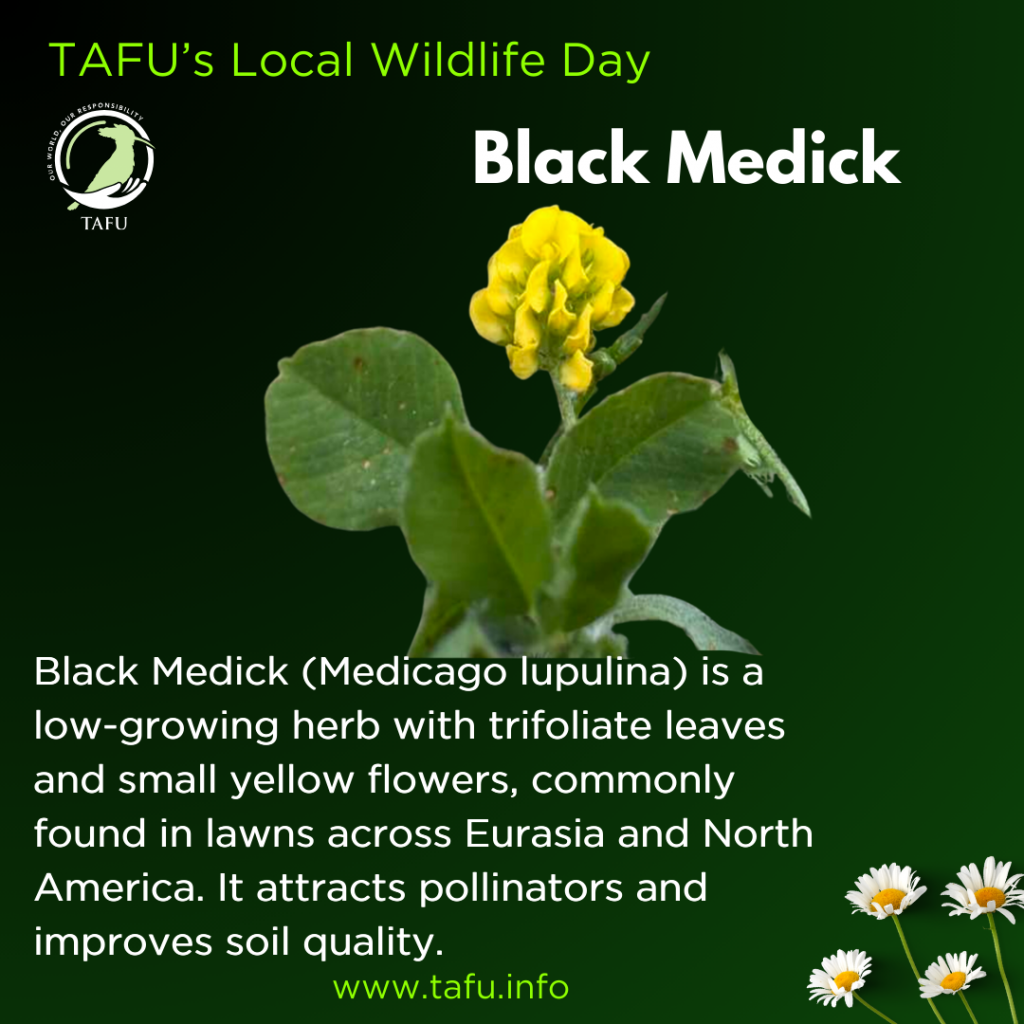Black Medick
As part of the countdown to TAFU’s Local Wildlife Day on the 11th of July – Species no. 21.
Stay tuned – 22 more days and 22 more species until then!
Black Medick (Medicago lupulina), also known as yellow trefoil or hop clover, is a prostrate herbaceous plant native to Europe and temperate Asia but now widely naturalised across North America and other regions. They have trifoliate leaves similar to clover and small, bright yellow, pea-like flowers that bloom from mid-spring to mid-summer. It typically grows in low, sprawling mats and thrives in disturbed areas such as lawns, fields, roadsides, and waste places.
Black Medick has a deep taproot and is capable of fixing nitrogen in the soil, making it beneficial for improving soil fertility. Its flowers are grouped in dense clusters and are an important source of nectar for bees and other pollinators. After flowering, it produces small, black seed pods that contribute to its spread.
In addition to its ecological benefits, Black Medick can be used as a forage plant for livestock, more commonly consumed by sheep than cattle. Its hardiness and ability to grow in poor, compacted soils make it a valuable plant for pasture and soil improvement and can also add a beautiful mat of green and yellow to a garden.
Allowing it to grow in areas where soil improvement is needed and by reducing the use of herbicides that could harm black medick, not only can we have a sweet addition to our gardens or fields, but it can also be a brilliant forage plant and improve soil quality. Just as Black Medick is supported by pollinators they also support pollinators, hence helping the whole ecosystem.

